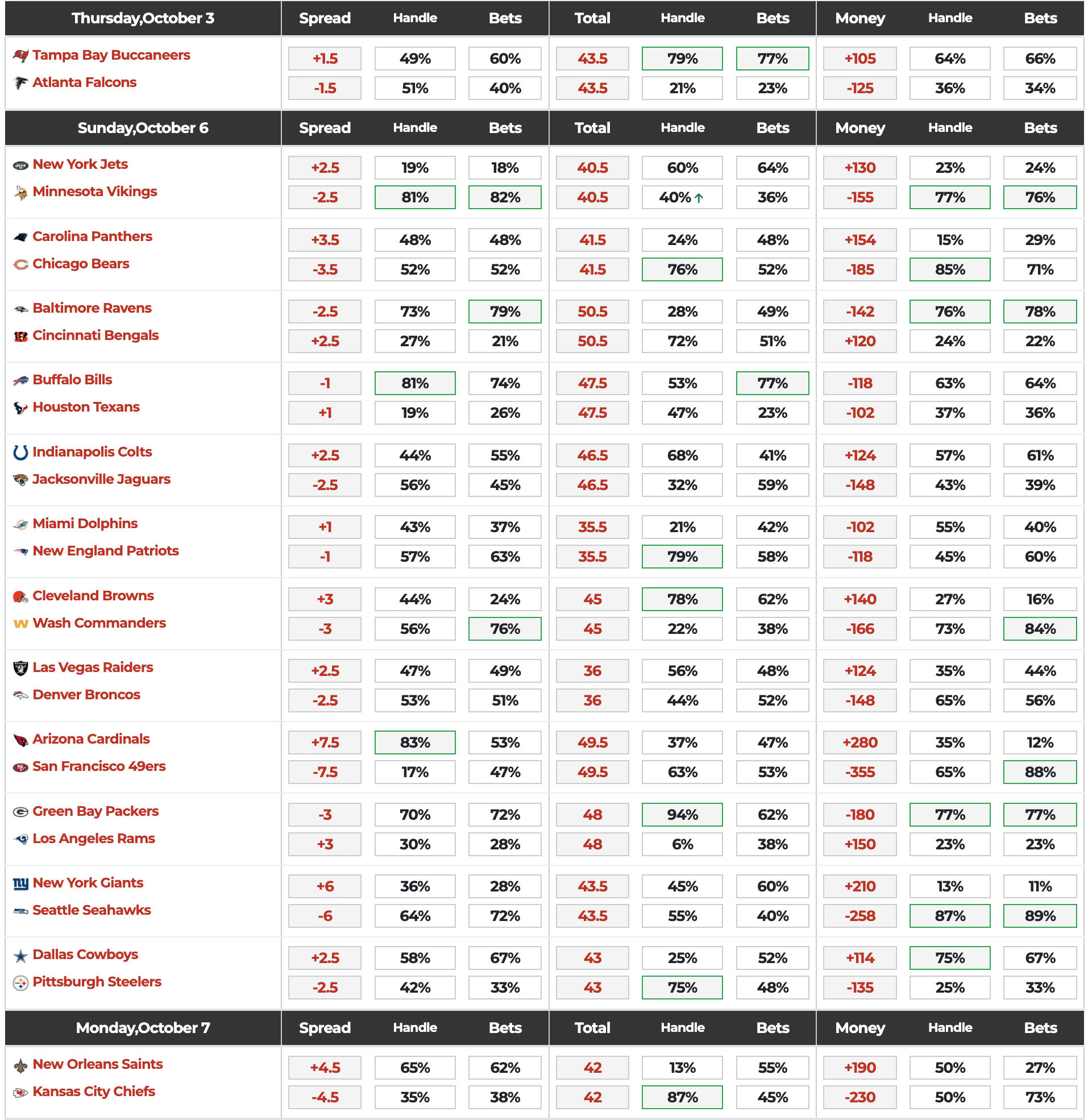🚀 NFL TOP PUBLIC BETS ON DRAFTKINGS

When it comes to sports betting, one of the tools I find incredibly useful is public betting percentages. Understanding how to use this data can give you an edge, especially when you’re trying to make informed decisions rather than simply betting on a hunch. Here’s how I approach using public betting percentages in my strategy.
What Are NFL Public Betting Percentages?
First, let’s break down what public betting percentages are. These percentages reflect where the majority of bettors are placing their money on a particular game. Typically, sportsbooks will display two key percentages: the percentage of bets placed on each team and the percentage of the total money wagered on each team.
The percentage of bets shows how many individual bets have been placed on a team, while the percentage of money shows how much money is being wagered on each side. The distinction is crucial because a high percentage of bets doesn’t necessarily mean a high percentage of money. For instance, a large number of small bets could be placed on one side, but a few large bets on the other could skew the money percentage.
Why It Matters
Understanding public betting percentages is important because they can help you gauge where the public is leaning. In many cases, the public tends to favor popular teams or recent winners, which can create situations where the line (the point spread or odds) moves in a way that presents value on the other side. This is where the concept of “fading the public” comes in.
When you fade the public, you’re essentially betting against where the majority of the public is placing their money. The idea is that sportsbooks set their lines to balance action on both sides of a bet. If too much money is coming in on one side, they might adjust the line to encourage betting on the other side, potentially creating value if you go against the public.
How I Use NFL Public Betting Percentages
- Identifying Line Movement: One of the first things I look at is how the line has moved in relation to public betting percentages. If I see that a large percentage of bets are on one team, but the line has moved in favor of the other team, this can be a red flag. It suggests that the sportsbooks might be expecting the less popular side to cover, and they’re adjusting the line accordingly. In this case, I might consider betting against the public.
- Analyzing Money vs. Bets: Another key aspect I pay attention to is the discrepancy between the percentage of bets and the percentage of money. If a team has a high percentage of bets but a low percentage of money, it could indicate that the sharp bettors—those who place large, well-informed wagers—are on the other side. This can be a strong indicator to follow the money rather than the public.
- Consider the Context: I also like to consider the context of the game. Public betting percentages can sometimes be misleading if you don’t take into account factors like injuries, weather conditions, or recent performance trends. For instance, if a key player is out, the public might overreact, creating an opportunity to find value by betting against the public. However, I always make sure to do my own research and not rely solely on public percentages.
- Timing My Bets: Timing is everything in betting. I often use public betting percentages to determine when to place my bets. If I notice that public money is heavily skewed to one side early in the week, I might wait to see if the line moves further in a direction that favors my intended bet. Conversely, if I see a favorable line and anticipate the public will push it further in the other direction, I’ll lock in my bet early.